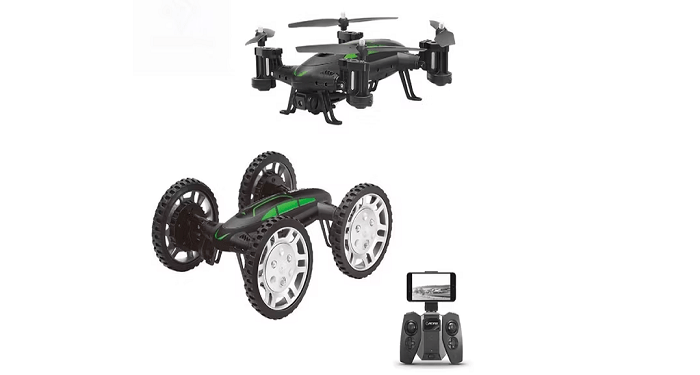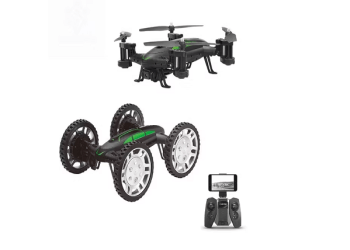Remote control (RC) technology has long captivated hobbyists and enthusiasts, bridging the thrill of physical control with the precision of digital performance. What began as simple radio-controlled cars and airplanes has evolved into a complex, dynamic ecosystem blending advanced robotics, artificial intelligence, and immersive gaming experiences. From RC drones in competitive flight simulators to ultra-responsive RC racing cars, gaming’s remote control evolution is redefining the boundaries between play, skill, and technology.
The Early Days: Tactile Thrills and Simplicity
In the 1980s and 1990s, RC cars were among the most sought-after toys. Powered by AA batteries or nitro fuel, they offered tactile excitement and control. While these devices were purely physical and lacked digital connectivity, they served as the foundation for the remote gaming culture to come. At the time, skill in RC racing involved learning the quirks of each model, upgrading components like motors and wheels, and understanding terrain adaptability. Many enthusiasts would spend hours at their local RC store, browsing parts, getting expert advice, and connecting with fellow hobbyists. These early experiences set the stage for more digitally infused remote control gaming.
Enter the Drone Era
Drones revolutionized the RC space with their vertical flight capabilities, aerial maneuverability, and growing accessibility. As drone prices fell and camera technology improved, the intersection of RC technology and gaming found a new frontier: First-Person View (FPV) drone racing. With lightweight drones equipped with real-time video feeds and specialized headsets, players could now race through complex courses as if they were onboard.
FPV drone racing led to organized leagues like the Drone Racing League (DRL), blending high-speed action with esports broadcasting. Virtual simulators like Liftoff and DRL Simulator further gamified drone piloting, allowing users to practice in virtual environments before entering physical races. These simulators offered realistic physics engines and customizable drones, blurring the line between real and virtual gameplay.
Remote Control Meets Digital Gaming
One of the most exciting developments in RC gaming is the integration of physical remote control devices with virtual environments. Products like Mario Kart Live: Home Circuit and Hot Wheels Rift Rally exemplify this trend. Players use physical RC cars equipped with cameras that stream video to a gaming console. The physical living room becomes a racecourse, enhanced with augmented reality (AR) overlays of tracks, obstacles, and virtual opponents.
This hybrid gaming experience turns the player’s surroundings into a dynamic playground, where the digital and physical worlds interact in real time. It’s a marked shift from watching characters on a screen to controlling real-world vehicles influenced by digital mechanics, creating a feedback loop of interactivity.
Competitive and Cooperative Play
Modern RC gaming also emphasizes both competition and collaboration. Multiplayer drone battles, cooperative missions using RC robots, and shared racing circuits allow friends and strangers to team up or compete, both in real life and online. Games and hardware often come with apps or web platforms for leaderboard tracking, performance analytics, and community sharing.
Online integration means players can download new missions, race against AI or human opponents, or even code custom behaviors for their RC devices. This convergence of remote control and digital gaming has opened up new creative and competitive pathways for players of all skill levels.
The Rise of Smart Control and AI Integration
Artificial intelligence is further pushing the evolution of remote-controlled gaming. Some modern RC drones and vehicles now feature automated navigation, obstacle avoidance, and even autonomous racing capabilities. Players can train their vehicles using machine learning to complete laps faster or navigate complex terrains without constant manual control.
This AI-powered approach allows gamers to shift from drivers to developers, programming behaviors and strategies rather than simply piloting machines. As AI and automation become more advanced, we can expect to see more hybrid experiences where the line between manual and autonomous control becomes increasingly fluid.
What’s Next?
Looking ahead, the remote control gaming space is poised for even greater innovation. Mixed reality (MR) environments, where RC vehicles operate in physical space while interacting with virtual game elements visible through AR glasses or headsets, could redefine home gaming. Imagine a real RC tank that shoots virtual projectiles or a drone that scans the environment and triggers story-based missions.
Additionally, haptic feedback systems, voice control, and biometric sensors could further immerse players, creating a multi-sensory experience that enhances the connection between player and machine.
From the early days of battery-powered RC cars to the immersive world of FPV drones and AR-enhanced racing, the evolution of remote-controlled gaming is a testament to the creative fusion of technology and play. As physical devices become smarter and more connected, and as gaming continues to innovate, the boundary between the digital and tangible continues to fade. The future of remote control gaming is not just about controlling machines—it’s about experiencing entire worlds through them.








